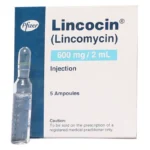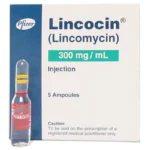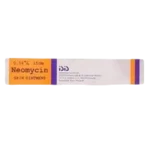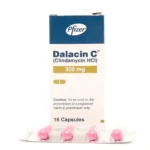Early gender blood tests represent one of the most significant advancements in modern prenatal care, offering expectant parents unprecedented insights into their baby’s development long before traditional ultrasound confirmation. These revolutionary non-invasive prenatal tests (NIPT) analyze fetal DNA circulating in maternal blood, providing accurate gender determination as early as 7-9 weeks of gestation while simultaneously screening for chromosomal abnormalities.
This comprehensive guide explores every aspect of early gender blood testing, from the science behind fetal DNA analysis to practical considerations for expectant parents considering these screening options. Our proprietary Early Gender Blood Test Timeline Calculator helps you determine the optimal testing window based on your unique health profile, ensuring you make informed decisions about your prenatal journey.
Early Gender Blood Test Timeline Calculator
Assess the optimal timeline for early gender blood testing based on your profile
Early Gender Blood Test Timeline Assessment
Personalized assessment based on your health profile
Interpretation
Based on your profile, you are in the optimal window for early gender blood testing. The test can typically detect fetal gender as early as 7-9 weeks with high accuracy, though individual factors may influence the exact timeline.
Personalized Recommendations
- Schedule your test between weeks 8-10 of pregnancy for optimal accuracy
- Consult with your healthcare provider to confirm your exact gestational age
- Maintain regular prenatal care and follow-up appointments
- Discuss any concerns about the testing process with your healthcare provider
Disclaimer: This calculator provides estimates based on general medical knowledge and should not replace professional medical advice. Always consult with your healthcare provider for personalized guidance regarding prenatal testing.
Try More Free Tools:
- Try our Galleri Test: Revolutionizing Multi-Cancer Early Detection
- Try our Prenuvo Scan: Is The Full-Body MRI Worth The Cost?
- Try our Normal Blood Sugar Levels For Adults: Age-Specific Charts

Table Of Contents
What is an Early Gender Blood Test and How Does It Work?
Early gender blood tests, medically known as non-invasive prenatal testing (NIPT), represent a breakthrough in prenatal screening technology that analyzes cell-free fetal DNA (cfDNA) circulating in the maternal bloodstream. These tests can detect fetal gender by identifying the presence or absence of Y chromosomes in the mother's blood sample, with accuracy rates exceeding 99% when performed after 9 weeks of pregnancy. The science behind these tests revolves around the discovery that fetal DNA crosses the placental barrier and enters maternal circulation, where it can be isolated and analyzed through advanced genetic sequencing techniques.
The process begins when tiny fragments of fetal DNA, known as cell-free fetal DNA, cross the placenta and enter the mother's bloodstream. This transfer starts as early as 4-5 weeks of pregnancy, but sufficient quantities for reliable testing typically accumulate by 7-9 weeks of gestation. Laboratory technicians use sophisticated molecular techniques to amplify and analyze this genetic material, specifically looking for Y-chromosome sequences that would indicate a male fetus. The absence of Y-chromosome material suggests a female fetus, though confirmation through additional testing may be recommended in some cases.
Modern NIPT technology employs massively parallel sequencing to analyze millions of DNA fragments simultaneously, creating a comprehensive genetic profile that reveals not only fetal sex but also potential chromosomal abnormalities. The entire process is completely safe for both mother and baby, requiring only a standard blood draw from the mother's arm, similar to routine prenatal blood work. Results are typically available within 7-14 business days, though some expedited services offer faster turnaround times for an additional fee.
Key advantages of early gender blood tests include:
✓ Early detection - Gender can be determined weeks before an anatomy ultrasound
✓ High accuracy - Over 99% accuracy when performed after 9 weeks
✓ Non-invasive procedure - No risk to mother or fetus compared to invasive tests
✓ Dual-purpose screening - Also screens for common chromosomal conditions
✓ Psychological benefits - Early bonding and preparation opportunities
How Accurate Are Early Gender Blood Tests Compared to Traditional Methods?
The accuracy of early gender blood tests significantly surpasses traditional gender prediction methods, with clinical studies demonstrating 99.1% accuracy for fetal sex determination when performed after 9 weeks of gestation. This represents a substantial improvement over ultrasound-based gender determination, which typically achieves 95-98% accuracy when performed during the second-trimester anatomy scan (18-22 weeks) and only 75-80% accuracy during first-trimester scans (12-14 weeks). The remarkable precision of blood-based gender testing stems from direct analysis of fetal genetic material rather than interpretation of physical characteristics, eliminating operator-dependent variables that can affect ultrasound accuracy.
Several factors influence the accuracy rates of early gender blood tests, with gestational age being the most significant determinant. Testing performed before 7 weeks gestation may yield false results due to insufficient fetal DNA in maternal circulation, with studies showing accuracy rates of approximately 95% at 7 weeks, 97% at 8 weeks, and over 99% after 9 weeks. Maternal factors such as high body mass index (BMI above 30) can also impact accuracy by diluting the concentration of fetal DNA, potentially requiring later testing or additional verification. Multiple pregnancies present additional complexity, as the test may detect Y chromosomes from one male twin while the other twin is female, though specialized analysis can often determine the sex of each fetus individually.
Comparative accuracy of gender determination methods:
✓ NIPT blood test (after 9 weeks): 99.1% accurate
✓ Second-trimester ultrasound: 95-98% accurate
✓ First-trimester ultrasound: 75-80% accurate
✓ At-home prediction kits: 50-80% accurate (varying by method)
✓ Genetic amniocentesis: 99.9% accurate but invasive with miscarriage risk
False positive and false negative results, while rare, can occur with early gender blood tests for several biological reasons. Vanishing twin syndrome, where a twin pregnancy naturally reduces to a singleton early in gestation, may cause false positive Y-chromosome detection if the vanished twin was male. Maternal organ transplantation from a male donor represents another rare source of false positives, as male donor DNA continues circulating in the recipient's bloodstream. Technical errors during sample processing or extremely low fetal DNA fractions (below 4%) represent additional sources of potential inaccuracy, though accredited laboratories have stringent quality controls to minimize these occurrences.
When Can You Take a Gender Blood Test During Pregnancy?
The timing for early gender blood testing represents a critical consideration for expectant parents, with most healthcare providers recommending testing between 9-10 weeks gestation for optimal accuracy. This window represents the balance between early detection and reliable results, as sufficient fetal DNA (typically >4% of total cell-free DNA) has accumulated in maternal circulation by this point while still providing gender information weeks before traditional ultrasound methods. The fetal DNA fraction increases steadily throughout pregnancy, starting at approximately 3-6% at 7 weeks, 6-10% at 8 weeks, and reaching 10-20% by 9-10 weeks gestation, directly correlating with test accuracy.
Several biological and technical factors influence the ideal testing timeline, with gestational age confirmation being paramount. While many women track their pregnancy from the first day of their last menstrual period (LMP), ovulation variation can cause discrepancies of 3-7 days in actual fetal age. Ultrasound confirmation provides more accurate dating, particularly crown-rump length measurements during first-trimester scans, which can determine gestational age within 3-5 days. For women undergoing fertility treatments with precisely known conception dates, testing may be considered as early as 7 weeks, though with the understanding that accuracy improves with each subsequent week.
Our Early Gender Blood Test Timeline Calculator incorporates multiple variables to personalize testing recommendations based on your specific circumstances, including:
✓ Gestational age - Based on LMP or ultrasound dating
✓ Maternal BMI - Higher BMI may require later testing
✓ Pregnancy history - Previous pregnancies can affect fetal DNA levels
✓ Conception method - IVF pregnancies have precisely known dates
✓ Multiple gestation - Twins may require different timing considerations
Medical organizations have established clear guidelines regarding the earliest appropriate testing times, with the American College of Obstetricians and Gynecologists (ACOG) recommending NIPT not be performed before 9-10 weeks gestation for routine screening. These recommendations balance the desire for early information with clinical reliability, acknowledging that while fetal DNA is present earlier, the quantity may be insufficient for definitive conclusions in all cases. Some direct-to-consumer testing companies offer testing as early as 7 weeks, but these earlier tests typically carry disclaimers regarding potentially reduced accuracy and the possibility of needing retesting if fetal DNA percentage is inadequate.
What Are the Different Types of Early Gender Blood Tests Available?
The landscape of early gender blood tests encompasses both medical-grade diagnostic tests offered through healthcare providers and direct-to-consumer kits available without medical supervision. Medical NIPT options represent the gold standard, providing not only gender information but comprehensive screening for chromosomal abnormalities including Down syndrome (trisomy 21), Edwards syndrome (trisomy 18), Patau syndrome (trisomy 13), and sex chromosome abnormalities. These clinical tests require a blood draw at a certified laboratory or healthcare facility, physician involvement in ordering and interpreting results, and typically feature the highest accuracy rates and reliability standards.
Major medical NIPT brands available in the United States and European Union include:
✓ Harmony Prenatal Test - Offered by Roche, with 99% accuracy for gender detection
✓ MaterniT21 PLUS - Laboratory Corporation of America's comprehensive screening
✓ Panorama - Natera's test with twin zygosity determination capability
✓ Verifi - Illumina's test with broad chromosomal abnormality screening
✓ QNatal Advanced - Quest Diagnostics' combined first-trimester screening alternative
Direct-to-consumer early gender tests have emerged as a popular alternative for parents seeking early gender information without comprehensive aneuploidy screening. These kits typically cost $50-200 compared to $300-800 for medical NIPT, though they provide limited information focused exclusively on fetal sex determination. The testing process involves self-collection of blood via finger prick at home, shipment to a laboratory, and online results delivery within 5-10 business days. While convenient and more affordable, these tests may have slightly lower accuracy rates than medical NIPT and lack the clinical oversight and counseling that accompanies physician-ordered testing.
A third category of early gender prediction includes non-DNA-based methods such as the Ramzi theory (placenta placement), skull theory, Nub theory, and various at-home prediction kits based on urine or saliva. These methods typically claim 50-80% accuracy but lack scientific validation through peer-reviewed studies. The Chinese gender calendar, for instance, purports to predict gender based on maternal age and conception month but demonstrates no better accuracy than random chance in controlled evaluations. While entertaining for some expectant parents, these methods should not be relied upon for accurate gender information or medical decision-making.
How Much Do Early Gender Blood Tests Cost and Are They Covered by Insurance?
The cost structure for early gender blood tests varies significantly based on testing type, geographic location, and insurance coverage, with out-of-pocket expenses ranging from under $100 for basic direct-to-consumer kits to over $2,000 for comprehensive medical NIPT without insurance. Medical-grade NIPT ordered through healthcare providers typically carries list prices of $800-1,500 in the United States, though negotiated insurance rates and self-pay discounts often reduce patient responsibility to $100-500. Most insurance plans now cover NIPT for women over 35, those with abnormal ultrasound findings, or those with other risk factors, while coverage for low-risk pregnancies remains inconsistent across providers and regions.
Insurance coverage considerations for early gender blood tests include:
✓ Maternal age - Women 35+ typically receive coverage
✓ Medical indications - Abnormal screening results or family history
✓ State mandates - Some states require NIPT coverage for all pregnancies
✓ Plan specifics - HMO vs PPO and in-network provider requirements
✓ Medical necessity - Documentation supporting testing rationale
The European Union presents a different coverage landscape, with many national healthcare systems covering NIPT for high-risk pregnancies while offering self-pay options for low-risk patients seeking early gender information. The United Kingdom's NHS, for instance, offers NIPT for pregnancies with increased risk of chromosomal abnormalities, with gender disclosure following the 20-week anatomy scan in most regions. Out-of-pocket costs for private testing in Europe typically range from €150-400, with variations between countries and specific testing panels.
For patients facing significant out-of-pocket costs, several strategies can improve affordability. Many testing companies offer cash-pay discounts for uninsured patients or those with high deductibles, potentially reducing costs by 40-60%. Patient assistance programs exist for qualifying individuals, particularly those with demonstrated financial need. Some healthcare providers offer payment plans that spread testing costs over several months, while health savings accounts (HSAs) and flexible spending accounts (FSAs) can provide tax-advantaged payment options for those with eligible insurance plans.
What Medical Conditions Can Early Gender Blood Tests Detect Beyond Baby's Sex?
While many parents initially seek early gender blood tests for gender revelation, these comprehensive screening tools provide crucial medical information about fetal chromosomal health that far transcends sex determination. Non-invasive prenatal testing primarily screens for the three most common autosomal trisomies: Down syndrome (trisomy 21), Edwards syndrome (trisomy 18), and Patau syndrome (trisomy 13). These conditions result from extra copies of specific chromosomes and cause varying degrees of physical and intellectual disability, with screening accuracy exceeding 99% for the most common form of Down syndrome.
Expanded NIPT panels screen for additional genetic conditions including:
✓ Sex chromosome aneuploidies - Turner syndrome (X), Klinefelter syndrome (XXY)
✓ Microdeletion syndromes - DiGeorge, Prader-Willi, Angelman syndromes
✓ Fetal sex determination - XX female or XY male chromosomal patterns
✓ Rhesus D status - Important for Rh-negative mothers
✓ Rare autosomal trisomies - Involving chromosomes other than 13, 18, 21
The clinical utility of these expanded screening capabilities extends far beyond satisfying parental curiosity, enabling early detection of serious fetal conditions that may require specialized prenatal care, delivery planning, or postnatal interventions. For example, identifying Turner syndrome prenatally allows for monitoring of potential cardiac abnormalities that commonly accompany the condition. Detecting Klinefelter syndrome enables parents to educate themselves about the developmental trajectory and potential learning differences their child may experience. Microdeletion screening identifies missing chromosomal segments associated with distinct clinical syndromes that might otherwise go undetected until developmental delays become apparent in infancy or early childhood.
It is crucial to understand the distinction between screening and diagnostic testing when interpreting NIPT results. NIPT represents a screening test with high sensitivity and specificity but is not considered diagnostic. Positive screening results for chromosomal abnormalities typically require confirmation through diagnostic procedures such as chorionic villus sampling (CVS) or amniocentesis before definitive diagnosis. These invasive tests carry a small but real risk of pregnancy loss (approximately 0.1-0.3%), making NIPT an invaluable preliminary screening tool that can help parents decide whether to pursue definitive diagnostic testing.
Who Should Consider Early Gender Blood Testing During Pregnancy?
Early gender blood testing offers benefits across diverse patient populations, though specific considerations apply to different groups based on medical history, age, and personal preferences. The American College of Obstetricians and Gynecologists initially recommended NIPT primarily for women with identified risk factors, but recent guidelines acknowledge the value for all pregnant women regardless of risk status. Understanding which patients derive the greatest benefit from early testing helps healthcare providers offer appropriate guidance while supporting informed patient decision-making.
Ideal candidates for early gender blood testing include:
✓ Advanced maternal age - Women 35 years or older at delivery
✓ Abnormal ultrasound findings - Soft markers suggesting chromosomal issues
✓ Previous affected pregnancy - History of chromosomal abnormalities
✓ Family history - Genetic conditions in first-degree relatives
✓ Carrier status - Known balanced translocations or genetic mutations
✓ Personal preference - Low-risk patients seeking early information
While medical indications clearly support testing for high-risk populations, low-risk patients increasingly choose early gender blood testing for various personal reasons. Some parents value the extended preparation time that early gender knowledge provides, whether for naming considerations, nursery planning, or sibling preparation. Others appreciate the psychological benefits of early connection with their baby through gender-specific pronouns and imagery. Families with sex-linked genetic conditions (such as hemophilia or Duchenne muscular dystrophy) may seek early gender information to understand whether further specialized testing is warranted based on the fetus's sex.
Contraindications and limitations for early gender blood testing primarily involve specific medical circumstances that may compromise test accuracy or interpretation. Women with significantly elevated BMI (typically >40) may have reduced fetal DNA fractions, potentially requiring later testing or alternative screening approaches. Organ transplant recipients, particularly those with male donors, may experience false positive Y-chromosome detection. Multiple pregnancies present interpretation challenges, though specialized analysis can often determine fetal sex for each baby individually. Patients with known chromosomal abnormalities themselves or those taking certain anticoagulant medications should discuss testing limitations with their genetic counselor before proceeding.
How Do Early Gender Blood Tests Compare to Ultrasound for Gender Determination?
The comparison between early gender blood tests and ultrasound for fetal sex determination involves multiple dimensions including accuracy, timing, cost, and additional benefits. While ultrasound represents the traditional standard for gender revelation during pregnancy, NIPT has emerged as a technologically superior alternative for parents seeking earlier and more definitive information. Understanding the relative strengths and limitations of each method enables expectant parents to make informed choices aligned with their priorities, values, and clinical circumstances.
Accuracy represents the most significant differentiator between these two gender determination methods. NIPT demonstrates 99.1% accuracy for fetal sex determination when performed after 9 weeks gestation, while first-trimester ultrasound (11-14 weeks) achieves only 75-80% accuracy based on visualization of the genital tubercle orientation. Second-trimester anatomy scans (18-22 weeks) improve ultrasound accuracy to 95-98% under optimal conditions, though factors such as fetal position, maternal body habitus, sonographer experience, and equipment quality can all impact reliability. The direct genetic analysis employed by NIPT eliminates these variables, providing consistent accuracy across diverse patient populations and clinical settings.
Timing considerations distinctly favor blood-based testing, with NIPT providing reliable gender information as early as 9 weeks compared to 11-14 weeks for earliest ultrasound prediction and 18-22 weeks for definitive ultrasound confirmation. This 6-12 week advantage allows for earlier bonding, preparation, and in cases of sex-linked genetic conditions, more timely decisions regarding additional testing. The table below illustrates key differences between these gender determination methods:
| Feature | Early Gender Blood Test | First-Trimester Ultrasound | Anatomy Scan Ultrasound |
|---|---|---|---|
| Earliest Timing | 7-9 weeks | 11-14 weeks | 18-22 weeks |
| Accuracy | 99.1% after 9 weeks | 75-80% | 95-98% |
| Additional Information | Chromosomal screening | Basic anatomy, NT measurement | Comprehensive anatomy |
| Cost | $300-800 (with insurance) | $200-500 | $300-1000 |
| Safety | Non-invasive blood draw | Non-invasive ultrasound | Non-invasive ultrasound |
Beyond gender determination, each method provides distinct additional benefits that may influence patient preference. NIPT offers comprehensive chromosomal screening that can detect conditions not visible on ultrasound, while ultrasound provides invaluable information about fetal anatomy, growth, and placental location that NIPT cannot assess. Many parents ultimately choose both approaches, using NIPT for early genetic information and gender revelation followed by anatomy ultrasound for structural assessment and confirmation. This complementary approach leverages the strengths of both technologies to provide the most complete prenatal picture possible.
What Are the Benefits and Limitations of Early Gender Blood Testing?
Early gender blood testing offers numerous advantages for expectant parents, though understanding its limitations ensures appropriate expectations and informed decision-making. The benefits extend beyond simple gender revelation to encompass psychological, practical, and medical dimensions that collectively enhance the prenatal experience for many families. Simultaneously, recognizing the constraints of this technology prevents overreliance on results and supports appropriate follow-up when indicated.
Psychological benefits represent a significant advantage of early gender knowledge, with research indicating that many parents experience enhanced bonding when using gender-specific language, names, and imagery earlier in pregnancy. This early connection may support maternal-fetal attachment, potentially influencing health behaviors such as smoking cessation, improved nutrition, and consistent prenatal care. Practical advantages include extended preparation time for baby names, nursery themes, clothing selection, and sibling adjustment, particularly valuable for families with cultural traditions requiring specific preparations based on fetal sex. From a medical perspective, early identification of Y chromosomes can prompt additional testing for sex-linked genetic conditions, while unexpected results may reveal maternal health conditions such as chromosome abnormalities or cancer in rare cases.
Significant benefits of early gender blood testing include:
✓ Early bonding - Enhanced connection through gender-specific references
✓ Preparation time - Extended timeline for practical arrangements
✓ Medical planning - Opportunity for targeted testing when indicated
✓ Anxiety reduction - Resolution of curiosity about baby's sex
✓ Family inclusion - Earlier sharing of specific information with loved ones
Despite these advantages, early gender blood tests present important limitations that warrant consideration. The tests cannot detect all birth defects or genetic conditions, potentially creating false reassurance about fetal health when used as a standalone screening method. False positive and false negative results, while rare, can occur due to biological factors such as vanishing twin, maternal chromosome abnormalities, or confined placental mosaicism. The tests provide no information about physical development or structural abnormalities, requiring ultrasound evaluation regardless of NIPT results. Ethical considerations regarding early gender disclosure continue to evolve, with some expressing concerns about potential gender bias in certain cultural contexts.
The financial aspect represents another limitation, with costs potentially creating disparities in access to this technology. While insurance coverage has expanded, out-of-pocket expenses remain significant for many families, particularly those with high-deductible plans or without NIPT coverage. Direct-to-consumer options improve affordability but may lack the clinical support and counseling that accompanies physician-ordered testing. Additionally, the very early knowledge of fetal sex may be undesirable for some parents who prefer the traditional surprise at delivery or who find early gender categorization unnecessarily limiting in their conceptualization of their child.
How to Prepare for an Early Gender Blood Test?
Proper preparation for an early gender blood test optimizes accuracy while ensuring a smooth testing experience. While NIPT requires minimal preparation compared to many medical procedures, observing specific guidelines regarding timing, hydration, and medication can enhance test reliability and patient comfort. Understanding the process from scheduling through results delivery helps manage expectations and reduces anxiety surrounding genetic testing.
The most critical preparation element involves accurate gestational age determination, as testing too early represents the most common cause of inaccurate results or test failure. While many women calculate gestational age from their last menstrual period, ovulation variation can cause discrepancies of 5-7 days in actual conception date. Ultrasound confirmation, particularly crown-rump length measurement between 8-12 weeks, provides the most reliable dating and is strongly recommended before proceeding with NIPT. Women with irregular cycles, recent hormonal contraception use, or conceived through fertility treatments should absolutely confirm dating via ultrasound before testing.
Practical preparation steps for early gender blood testing:
✓ Confirm gestational age - Ultrasound dating preferred over LMP calculation
✓ Hydrate adequately - Good hydration facilitates easier blood draw
✓ Review medications - Most medications don't affect testing but disclose all
✓ Wear appropriate clothing - Loose sleeves for easy arm access
✓ Bring insurance information - Required for physician-ordered tests
✓ Prepare questions - For genetic counselor or healthcare provider
Unlike some blood tests that require fasting, NIPT typically has no dietary restrictions, though extremely fatty meals immediately before testing might theoretically affect sample processing in rare cases. Patients should maintain their normal medication regimen unless specifically instructed otherwise by their healthcare provider, though disclosing all medications during test ordering helps the laboratory interpret results accurately. Some blood thinners may increase bruising risk at the draw site but don't typically affect test accuracy. Adequate hydration improves venous access, making the blood draw quicker and more comfortable, while avoiding caffeine beforehand may benefit patients prone to vasovagal reactions.
Mental and emotional preparation represents another important dimension of the testing process. Patients should clarify their motivations for testing and consider how they might respond to various possible results, including unexpected findings about fetal sex or chromosomal abnormalities. Discussing results disclosure preferences with partners and healthcare providers beforehand establishes clear communication protocols. Many testing companies offer options regarding how results are delivered (online portal, phone call, in-person consultation), allowing patients to select the approach that aligns with their emotional needs and information processing style.
What Do Early Gender Blood Test Results Mean and How Are They Interpreted?
Interpreting early gender blood test results requires understanding both the typical reporting format and the potential implications of various findings. Most NIPT reports clearly indicate fetal sex as either male (XY) or female (XX) when sufficient fetal DNA is detected and no atypical patterns are observed. Additionally, reports include fetal fraction measurements (percentage of fetal DNA in maternal blood), with values above 4% generally considered adequate for reliable interpretation. Understanding the components of the test report empowers patients to discuss results knowledgeably with their healthcare providers.
A typical early gender blood test report includes several key elements:
✓ Fetal sex chromosomes - XX (female) or XY (male) pattern
✓ Fetal fraction - Percentage of fetal DNA in sample
✓ Aneuploidy screening - Results for chromosomes 13, 18, 21, X, Y
✓ Test limitations - Explanation of what the test cannot detect
✓ Quality indicators - Information about sample suitability
For fetal sex determination, a result indicating "XY" or "male" means Y-chromosome sequences were detected in the maternal blood sample, suggesting a male fetus with approximately 99% accuracy when performed after 9 weeks. An "XX" or "female" result indicates no Y-chromosome material was detected, suggesting a female fetus with similar accuracy. In rare cases (approximately 0.1-0.2%), results may be reported as "atypical" or "inconclusive" due to insufficient fetal DNA, technical issues, or detection of unexpected chromosomal patterns that require additional investigation.
Beyond simple gender determination, NIPT reports include screening results for chromosomal abnormalities that warrant careful interpretation. "Low risk" or "negative" results indicate reduced probability of the screened conditions but don't guarantee a chromosomally normal fetus, as NIPT doesn't detect all genetic disorders or structural abnormalities. "High risk" or "positive" results indicate increased probability of a specific condition but require confirmation through diagnostic testing before definitive diagnosis. Patients should review all results with a qualified healthcare provider or genetic counselor who can explain the statistical probabilities, clinical implications, and recommended next steps based on specific findings.
Understanding the limitations of test interpretation helps prevent misunderstanding of results. NIPT cannot determine genetic conditions caused by single gene mutations, microdeletions (unless specifically included in the test panel), or structural abnormalities unrelated to chromosome number. The test cannot provide information about physical characteristics, intelligence, or complex traits influenced by multiple genetic and environmental factors. Additionally, NIPT does not assess pregnancy viability, fetal growth, placental function, or maternal health conditions unrelated to the genetic markers specifically examined.
Can Early Gender Blood Tests Be Wrong? Understanding Accuracy and Errors
While early gender blood tests demonstrate exceptionally high accuracy rates, understanding the potential sources of error helps contextualize results and guides appropriate follow-up. The overall accuracy for fetal sex determination exceeds 99% when performed after 9 weeks gestation under optimal conditions, but rare biological and technical factors can produce incorrect results. Recognizing these limitations ensures patients maintain realistic expectations while appreciating the remarkable reliability of this screening technology.
Biological factors represent the most common sources of inaccurate gender results, with vanishing twin syndrome being a frequently cited cause of false positive Y-chromosome detection. This occurs when a twin pregnancy naturally reduces to a singleton early in gestation, but residual DNA from a male twin continues circulating in maternal blood. Maternal chromosomal abnormalities, such as mosaicism or previously undiagnosed Klinefelter syndrome (XXY), can also cause discordance between NIPT results and actual fetal sex. Organ transplantation from a male donor represents another rare source of false positive results, as donor DNA continues circulating in the recipient's bloodstream indefinitely.
Technical and interpretation errors, while uncommon in accredited laboratories, represent additional potential sources of inaccuracy. Extremely low fetal DNA fraction (typically below 3-4%) increases the risk of false results due to statistical limitations in detecting minority DNA populations. Sample mix-ups or contamination during processing, while rare with modern laboratory protocols, can theoretically produce incorrect results. Bioinformatics errors in interpreting complex sequencing data occasionally occur, particularly in cases of unusual chromosomal patterns or multiple pregnancies. Reputable laboratories employ multiple quality control measures to minimize these technical errors, including independent verification of positive results.
Specific scenarios that may affect NIPT accuracy include:
✓ Early gestation - Testing before 7 weeks increases false result risk
✓ High maternal BMI - Higher weight dilutes fetal DNA concentration
✓ Multiple pregnancy - Complex interpretation with mixed sex twins
✓ Maternal malignancy - Cancer can release abnormal DNA into bloodstream
✓ Placental mosaicism - Discordance between placental and fetal chromosomes
When NIPT results conflict with ultrasound findings or clinical expectations, diagnostic testing through amniocentesis or CVS provides definitive clarification. These procedures analyze fetal cells directly, eliminating the placental discordance and maternal factors that can affect NIPT accuracy. The decision to pursue diagnostic testing depends on multiple factors including gestational age, specific result discrepancy, and patient preferences regarding pregnancy management. Genetic counseling is strongly recommended whenever NIPT results are unexpected, discordant with other findings, or difficult to interpret within the clinical context.
Are There Any Risks or Side Effects Associated with Early Gender Blood Tests?
Early gender blood tests stand out as exceptionally safe prenatal screening options, presenting no direct physical risks to either the pregnant person or developing fetus. The non-invasive nature of these tests, requiring only a standard blood draw from the mother's arm, eliminates the miscarriage risk associated with diagnostic procedures like amniocentesis or chorionic villus sampling. This safety profile represents one of the most significant advantages over traditional prenatal diagnostic methods, making comprehensive genetic screening accessible to all pregnant individuals regardless of risk factors.
The blood draw itself carries minimal risks common to all venipuncture procedures, including:
✓ Minor discomfort - Brief pain during needle insertion
✓ Bruising - Discoloration at the draw site lasting several days
✓ Lightheadedness - Vasovagal response in susceptible individuals
✓ Infection - Extremely rare with proper sterile technique
✓ Bleeding - Minimal and typically self-limiting
While physical risks are negligible, patients and providers should consider potential psychological impacts of early genetic information. Receiving unexpected or concerning results may generate anxiety, particularly during the waiting period between initial screening and confirmatory diagnostic testing. Early gender revelation may occasionally create disappointment if results don't align with personal preferences, though research suggests most parents adjust quickly regardless of outcome. Genetic counseling before testing helps prepare patients for various possible results, while clear communication about the screening (not diagnostic) nature of NIPT manages expectations about result certainty.
The privacy and ethical dimensions of genetic testing represent additional considerations beyond physical risks. Patients should understand how their genetic data will be stored, used, and protected, particularly when using direct-to-consumer testing services with different privacy standards than clinical laboratories. Some individuals have concerns about early gender assignment and its potential influence on parental perceptions before birth. In rare cases, NIPT may incidentally reveal maternal health conditions such as chromosomal abnormalities or cancer, creating unanticipated medical and psychological challenges that require appropriate support and follow-up.
How to Choose the Best Early Gender Blood Test for Your Needs?
Selecting the most appropriate early gender blood test requires careful consideration of multiple factors including clinical needs, financial considerations, personal values, and practical logistics. The expanding marketplace offers various testing options ranging from comprehensive medical-grade NIPT to basic gender-only direct-to-consumer kits, each with distinct advantages and limitations. Understanding the key differentiators between available tests enables expectant parents to make informed choices aligned with their unique circumstances and priorities.
Clinical requirements represent the primary consideration when selecting an early gender test. Women with established risk factors for chromosomal abnormalities, including advanced maternal age, abnormal ultrasound findings, or family history of genetic conditions, should prioritize medical-grade NIPT that includes comprehensive aneuploidy screening. These tests offer the highest accuracy, clinical validation, and professional support through genetic counseling. Low-risk patients seeking primarily gender information might consider more affordable options, including basic NIPT panels or direct-to-consumer kits, while understanding the trade-offs in clinical oversight and additional screening capabilities.
Key factors to evaluate when comparing early gender blood tests:
✓ Screening scope - Gender only vs. comprehensive aneuploidy screening
✓ Accuracy rates - Published clinical validation data
✓ Gestational requirements - Earliest testing timeframe
✓ Result turnaround - Typical time from draw to results
✓ Cost and insurance - Out-of-pocket expenses and coverage
✓ Clinical support - Availability of genetic counseling
Practical considerations including cost, insurance coverage, and testing logistics also influence test selection. Medical NIPT typically requires a blood draw at a clinical facility, while direct-to-consumer options allow home-based fingerstick sampling. Patients with limited mobility, transportation challenges, or phlebotomy anxiety might prefer the convenience of at-home collection, though clinical blood draws generally provide more reliable samples with lower test failure rates. Insurance coverage varies significantly between tests and providers, making verification of benefits an essential step before testing. Many laboratories offer pre-authorization services that confirm coverage and out-of-pocket costs before sample collection.
Beyond technical specifications, the testing experience and support resources represent important differentiators between providers. Some companies offer detailed online portals with educational resources, while others provide direct access to genetic counselors for result interpretation. The method of results delivery (electronic, phone, in-person) varies between providers, as does the depth of explanation provided with results. Patients should consider their information preferences, support needs, and comfort with independent result interpretation when selecting a testing provider, particularly when using direct-to-consumer options without clinical mediation.
What is the Future of Early Gender Blood Testing Technology?
The landscape of early gender blood testing continues to evolve rapidly, with ongoing technological advancements expanding screening capabilities while reducing costs and improving accessibility. Current research focuses on enhancing test accuracy at earlier gestational ages, expanding the range of detectable conditions, and developing novel applications for fetal DNA analysis. These innovations promise to further transform prenatal care in the coming years, providing increasingly comprehensive information while maintaining the non-invasive safety profile that defines current NIPT technology.
One significant frontier involves earlier testing capability, with several companies developing enhanced sequencing methods that may reliably detect fetal DNA as early as 5-6 weeks gestation. These advancements employ novel molecular techniques to enrich fetal DNA from maternal blood or analyze alternative biomarkers that appear earlier in pregnancy. Success in this area would provide gender and genetic information during the very first weeks of pregnancy, though ethical considerations regarding very early testing continue to be debated within the medical community. Simultaneously, research into improving accuracy in challenging cases such as high maternal BMI and multiple pregnancies addresses current limitations that affect specific patient populations.
Expanded screening panels represent another active area of development, with next-generation NIPT potentially detecting:
✓ Single-gene disorders - Cystic fibrosis, sickle cell disease, Tay-Sachs
✓ Microdeletions - Smaller chromosomal deletions than currently detectable
✓ Autosomal recessive conditions - When both parents are carriers
✓ Fetal blood group - Comprehensive genotyping beyond Rh factor
✓ Maternal health conditions - Preeclampsia, preterm labor risk assessment
The integration of artificial intelligence and machine learning into NIPT interpretation represents a technological frontier with significant potential. These computational approaches can identify subtle patterns in genetic data that might escape conventional analysis, potentially detecting novel genetic markers associated with developmental conditions. AI algorithms may also improve result accuracy in borderline cases with low fetal fraction or complex chromosomal patterns. Additionally, machine learning applications could personalize risk assessment based on combined genetic, clinical, and demographic factors, moving beyond population-based statistics to individual probability estimates.
Beyond technical advancements, the future of early gender testing includes evolving ethical frameworks, regulatory standards, and clinical implementation guidelines. As testing capability expands, professional organizations continue developing recommendations regarding appropriate use, informed consent, and equitable access. The decreasing cost of genetic sequencing may eventually make comprehensive NIPT standard care for all pregnancies, though this expansion necessitates parallel development of genetic counseling resources and support systems. Direct-to-consumer testing will likely continue growing, prompting ongoing discussion about the balance between accessibility and appropriate clinical oversight.
Case Study: Real-World Experience with Early Gender Blood Testing
Examining real-world experiences with early gender blood testing provides valuable insights beyond clinical statistics, illustrating how this technology functions in diverse personal circumstances. The following case studies represent composite profiles based on actual patient experiences, protecting individual privacy while demonstrating common scenarios, decision-making processes, and outcomes associated with early gender testing.
Case Study 1: Low-Risk Pregnancy with Early Gender Curiosity
Sarah, a 28-year-old elementary school teacher, became pregnant with her first child after two years of trying to conceive. With no risk factors beyond excitement, she sought early gender information primarily for bonding and preparation purposes. After researching options, she selected a direct-to-consumer early gender test at 9 weeks gestation, collecting a fingerstick blood sample at home. Results delivered via secure portal at 10 weeks indicated a female fetus with 99.1% predicted accuracy. The early knowledge allowed Sarah and her partner to finalize their chosen name, create a gender-specific nursery theme, and share the information with close family members. At the 20-week anatomy scan, ultrasound confirmation aligned with the blood test results, validating their early preparation.
Case Study 2: High-Risk Pregnancy with Medical Indications
Maria, a 38-year-old attorney pregnant with her second child, qualified for insurance-covered NIPT due to advanced maternal age. Her obstetrician ordered comprehensive screening at 10 weeks, with blood drawn at a laboratory facility. Results indicated a male fetus with low-risk screening for chromosomal abnormalities. The gender information held special significance for Maria, as hemophilia runs in her family and primarily affects males. While relieved by the low-risk aneuploidy results, she pursued additional specialized testing for hemophilia carrier status, eventually confirming the fetus was unaffected. The early gender information guided targeted testing that wouldn't have been pursued for a female fetus, demonstrating the medical utility beyond simple curiosity.
Case Study 3: Unexpected Findings Requiring Additional Investigation
James and Alex, a couple pregnant with twins through IVF, underwent NIPT at 10 weeks to screen for chromosomal abnormalities common with assisted reproduction. Results indicated one male and one female fetus, but with an atypical finding on the Y chromosome requiring further investigation. Genetic counseling revealed the possibility of differences of sex development or confined placental mosaicism. After extensive discussion, they opted for amniocentesis at 16 weeks, which confirmed typically developing male and female fetuses with placental mosaicism explaining the atypical NIPT result. While the process created temporary anxiety, they appreciated the comprehensive screening that identified a rare biological circumstance, and continued their pregnancy with appropriate monitoring.
These case studies illustrate several important themes in early gender testing:
✓ Varied motivations - From simple curiosity to medical necessity
✓ Different testing pathways - Direct-to-consumer vs. clinical NIPT
✓ Result implications - Ranging from simple preparation to additional testing
✓ Importance of support - Genetic counseling for complex results
✓ Overall satisfaction - Positive experiences across diverse scenarios
Frequently Asked Questions About Early Gender Blood Tests
How early can you take a blood test for gender?
Most healthcare providers recommend waiting until at least 9 weeks gestation for optimal accuracy, though some tests advertise capability as early as 7 weeks. The fetal DNA fraction increases throughout early pregnancy, with sufficient quantities for reliable detection typically present by 9 weeks. Testing before this timeframe may produce accurate results for some patients but carries higher rates of test failure or false results due to low fetal DNA concentration.
Can a blood test for gender be wrong?
While early gender blood tests demonstrate over 99% accuracy when performed after 9 weeks, rare biological circumstances can produce incorrect results. Vanishing twin syndrome, maternal chromosomal abnormalities, organ transplantation from a male donor, and technical errors represent potential sources of inaccuracy. These occurrences are uncommon, with the vast majority of patients receiving correct gender information through NIPT.
Are at-home gender blood tests accurate?
Reputable at-home early gender tests demonstrate high accuracy rates similar to clinical NIPT when performed according to instructions after the recommended gestational age. However, sample collection errors, shipping delays affecting sample integrity, and lower fetal DNA concentrations from fingerstick versus venous blood draws may slightly reduce accuracy compared to clinical testing. Patients should select tests with published clinical validation data and understand that clinical NIPT remains the gold standard.
Do insurance companies cover early gender blood tests?
Insurance coverage varies significantly between plans and individual circumstances. Most insurers cover NIPT for women over 35, those with abnormal ultrasound findings, or other risk factors, while coverage for low-risk pregnancies remains inconsistent. Patients should verify benefits with their insurance provider before testing, as out-of-pocket costs for uncovered tests typically range from $300-800.
What is the difference between NIPT and the early gender blood test?
NIPT (non-invasive prenatal testing) represents the comprehensive medical screening that includes gender determination along with assessment for chromosomal abnormalities. "Early gender blood test" often refers specifically to the gender revelation aspect, though technically both utilize the same underlying technology. Some direct-to-consumer companies offer gender-only testing without full aneuploidy screening at lower cost points.
Can you do a gender blood test with twins?
Yes, early gender blood testing can determine fetal sex in twin pregnancies, though with some limitations. The test can detect Y chromosomes indicating at least one male fetus, while absence of Y chromosomes suggests both are female. Determining the specific sex of each twin individually is possible in some cases but may require specialized analysis. Accuracy rates for twin pregnancies are slightly lower than singletons, typically around 97-98%.
What if the gender blood test results are different from the ultrasound?
When NIPT and ultrasound gender determinations conflict, NIPT results are statistically more likely to be correct, especially when the ultrasound was performed early in pregnancy. However, either result could be inaccurate due to biological or technical factors. Diagnostic testing through amniocentesis provides definitive clarification when such discrepancies occur, though many providers recommend repeating the ultrasound first to confirm initial findings.
Calculator Disclaimer: This tool provides educational estimates only and is not a substitute for professional medical advice. Always consult with your healthcare provider for personalized guidance.













Add a Comment